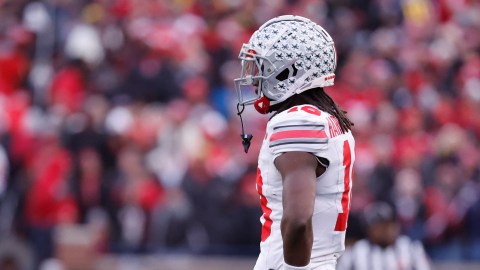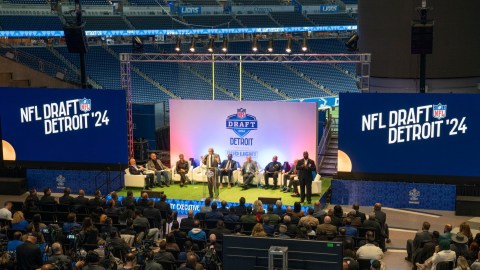It’s hard to believe the Wells Report took 103 days to investigate and write.
Over three months, 243 pages and 66 interviews later, all we’re left with is “more probable than not.” Patriots fans will choose to believe “or not,” while the rest of the world will accept the former.
The report implicates Patriots quarterback Tom Brady, equipment assistant John Jastremski and officials locker room attendant Jim McNally. Those who don’t support the Patriots will take the report at face value: Brady was the mastermind behind deflating footballs, and evidence suggests New England’s footballs were exponentially deflated more than the Indianapolis Colts’.
They can say McNally and Jastremski clearly were up to something nefarious, based on the report. How else do you explain Jastremski texting McNally about a “needle” multiple times? How else do you explain McNally referring to himself as the “deflator” or referencing deflation in regards to Brady’s early-season statistics?
Non-New Englanders can ask why else did Brady supply McNally with gifts? Why did he supposedly lie to Wells about knowing McNally and his role with the team? Why didn’t he submit his texts and emails? Why did McNally remove the footballs without permission from the officials locker room, and why did he stop off in a bathroom?
Patriots fans can defend their quarterback in any number of ways. They can say McNally and Jastremski acted alone, in fear, because Brady was angry NFL officials pumped the Patriots’ footballs up to nearly 16 PSI before New England’s 27-25 win over the Jets on Oct. 16 on McNally’s watch (this is probably the defense Brady should use).
Patriots fans can claim Exponent Inc., the consulting firm Ted Wells used to prove the Patriots’ footballs were deflated by hand, not weather, skews results to help its employer. A quick Google search provides plenty of ammo for such a defense.
They also might argue that one of the Colts’ footballs tested at 12.95 PSI, which would mean the football dropped just .05 PSI in the cold, which seems scientifically impossible, putting in doubt Wells’ widely claimed figure that Indianapolis’ footballs averaged 13 PSI before the game. The Wells Report and Exponent use this figure, which now seems faulty, throughout the investigation despite referee Walt Anderson failing to record either team’s pregame PSI and not inflating or deflating the Colts’ footballs.
Patriots fans also could argue the Colts’ footballs were tested near the later stages of halftime, while the Patriots’ footballs were tested at the beginning of halftime (only four Indianapolis footballs were tested because officials ran out of time). That would allow the Colts’ footballs to heat up at room temperature, raising the PSI.
Exponent did conduct research on testing footballs at the beginning of halftime versus the end, and showed a wet, cold football can increase nearly .7 PSI at room temperature in 13 1/2 minutes. If the Colts’ footballs average PSI was higher than 13, and if they were tested after being warmed up during halftime, then Exponent’s claim the Patriots’ footballs dropped .45 to 1.02 PSI more than the Colts’ footballs doesn’t quite add up.
Patriots fans could point to the NFL using two gauges at halftime, according to the Wells Report, designated as the logo gauge and non-logo gauge. The Patriots’ average PSI was 11.49 on the logo gauge and 11.11 on the non-logo gauge. The Colts’ average PSI was 12.74 on the logo gauge and 12.34 on the non-logo gauge. Anderson says he remembers using the logo gauge, but Exponent decides to assume he used the non-logo gauge instead.
The report states each team’s footballs could lose between 1 to 1.2 PSI, according to the Ideal Gas Law and the conditions of the night. On average, the Patriots’ footballs met that standard using the logo-gauge — though the recordings ranged wildly from 10.90 to 12.30. The difference in PSI drop between the Patriots’ and Colts’ footballs could be explained by the time in which the PSI was recorded (unknown) and the accuracy of the reported pre-game readings (unknown).
Perhaps the Wells Report found exactly what the NFL was looking for: inconclusive results. Wording suggests Brady knew about the Patriots’ plans to deflate footballs, but without Brady’s texts and emails, there’s no concrete proof. Brady can remain a marketable star while the NFL can say it was correct to assume wrongdoing from the Patriots and DeflateGate wasn’t just a huge waste of time.
Ultimately, the Wells Report was anticlimactic aside from McNally and Jastremski’s texts, which still don’t look good for the Patriots by any stretch, and both sides still have plenty of ammo.
Click to read the entire Wells Report on DeflateGate >>
Thumbnail photo via Stew Milne/USA TODAY Sports Images




